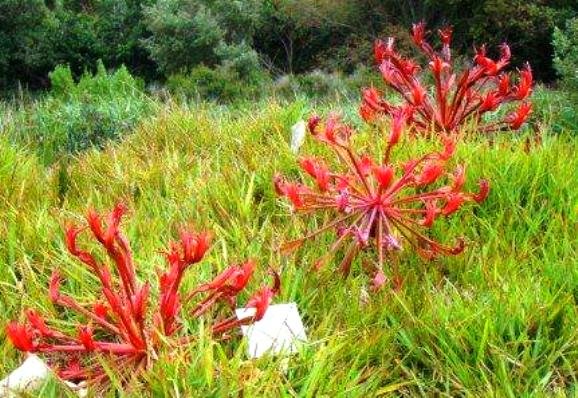Brunsvigia orientalis in garden conditions

Author: Ivan Lätti
Photographer: Ricky Mauer
Brunsvigia orientalis flower stems appear from the bare earth in late summer or autumn when there are no leaves yet. This is the phenomenon of hysteranthy, an adaptation allowing all the available resources of the underground bulb to be reserved for and focussed on performing one function at a time. The flowerhead develops into one large umbel with fifty or more separate dark pink flowers on long pedicels. The flowers are mainly pollinated by birds, particularly sunbirds.
When the flowers die, the dry stalk will eventually break off and the round, tumble-weed type fruit head, 60 cm in diameter, will roll away on a conspicuous journey, propelled by the wind. Seeds are then distributed along the way in a remarkable dispersal system. These seeds germinate quickly with the first winter rain, giving them the best chance of survival through early establishment in their first growing season (www.plantzafrica.com).

